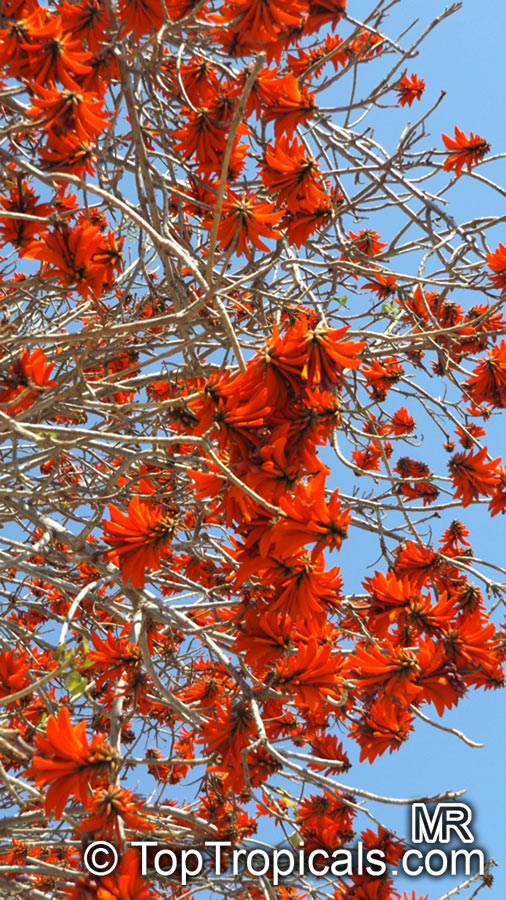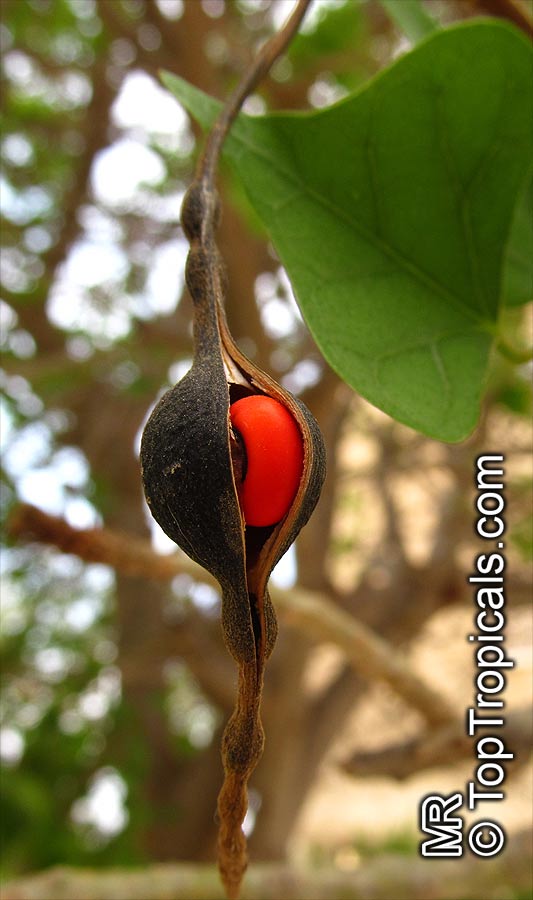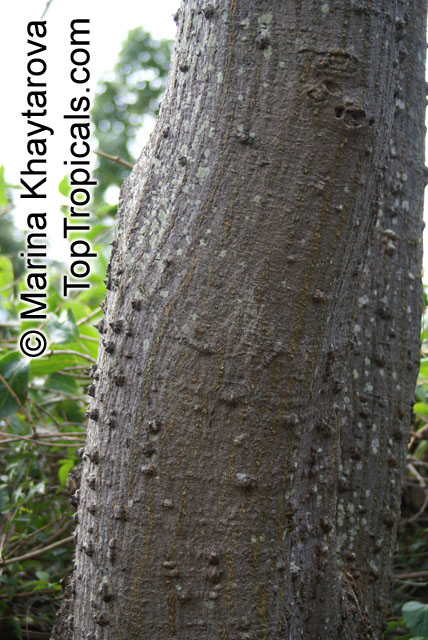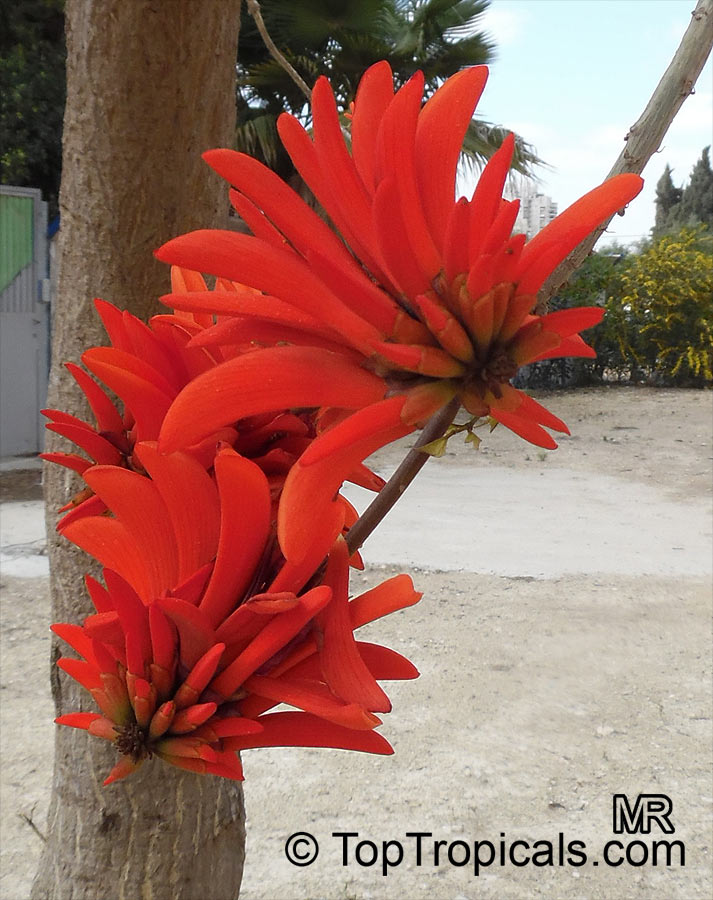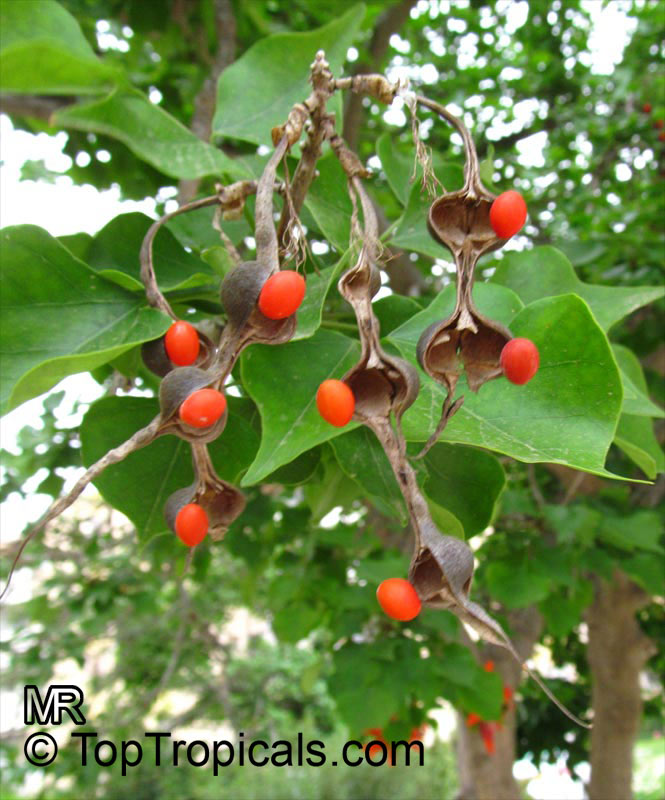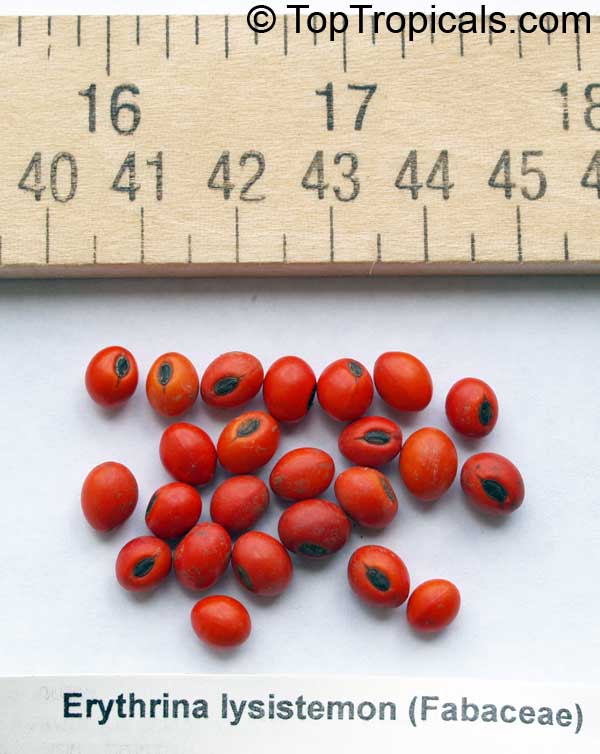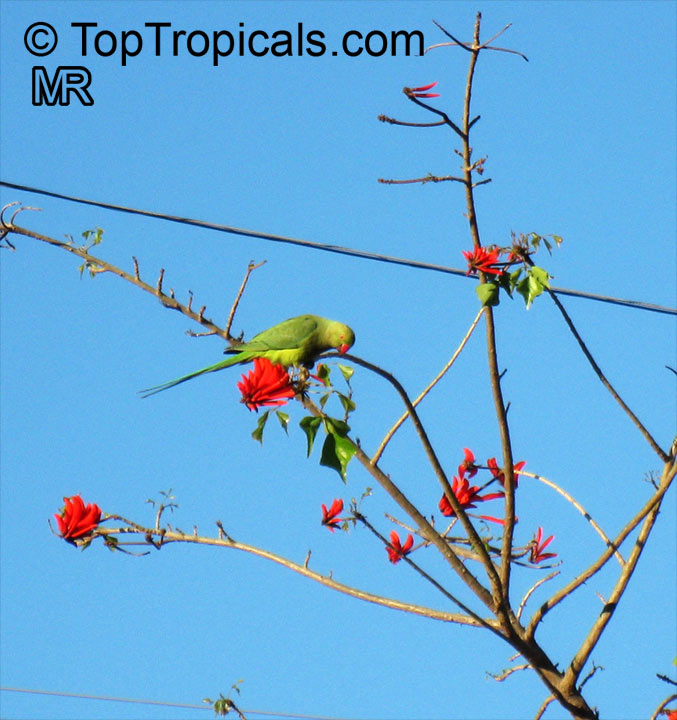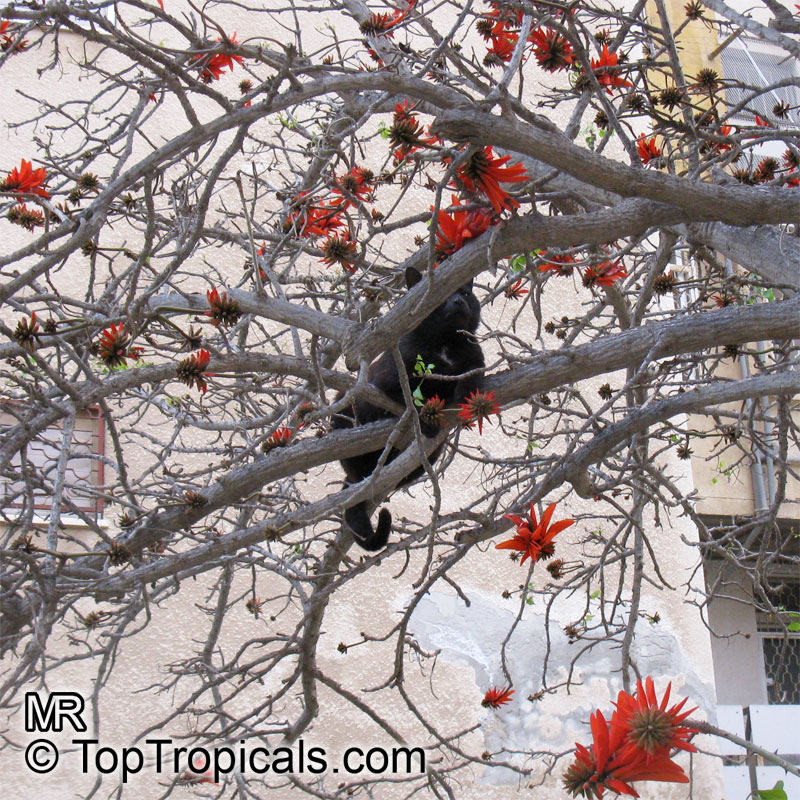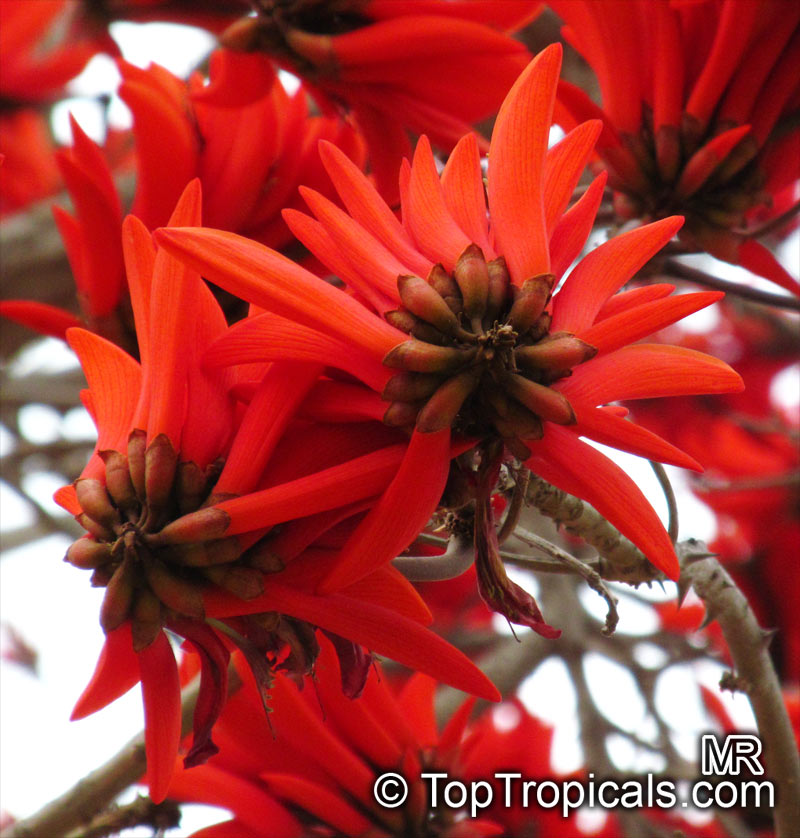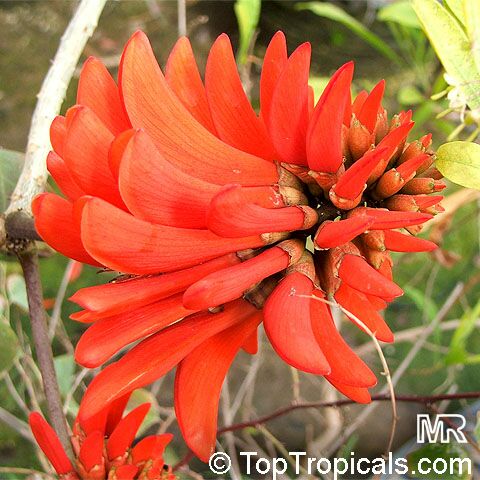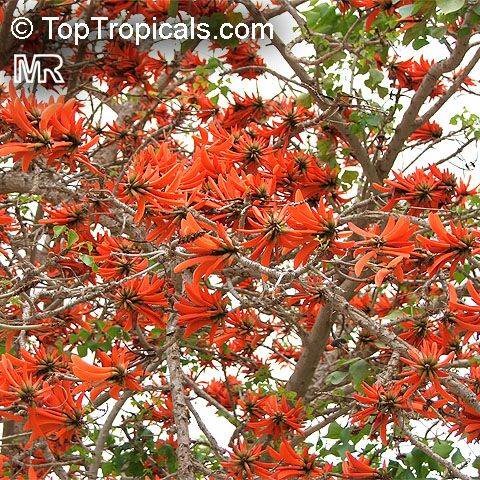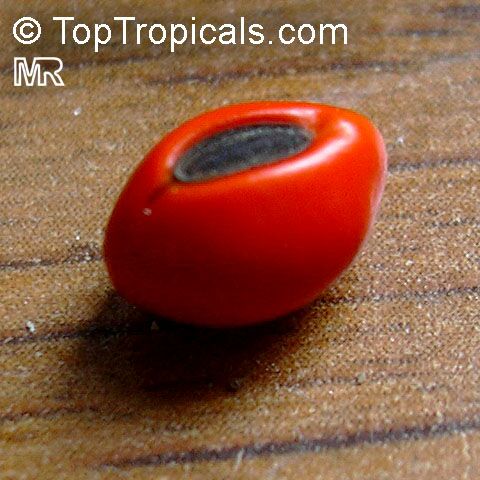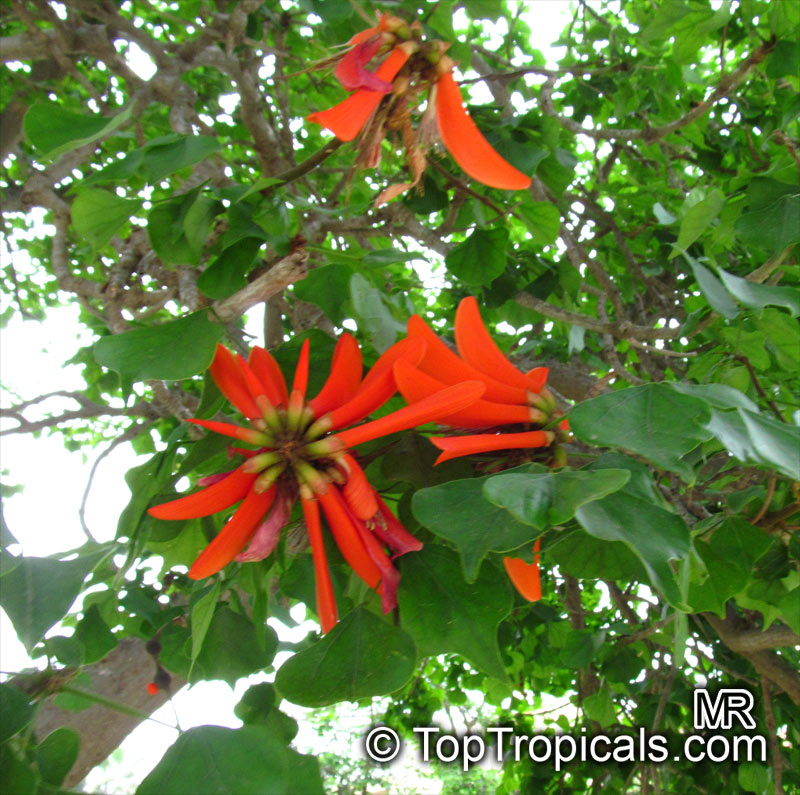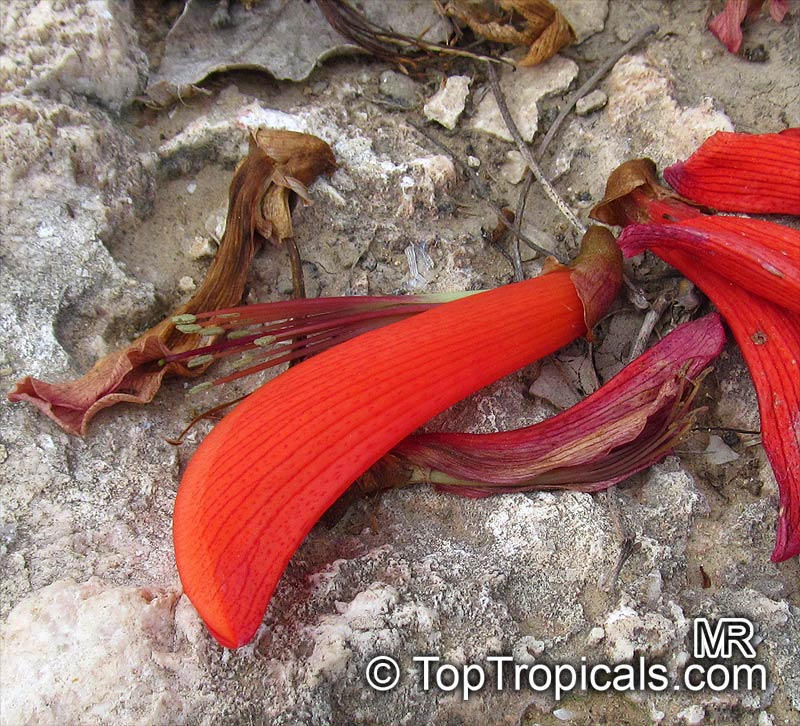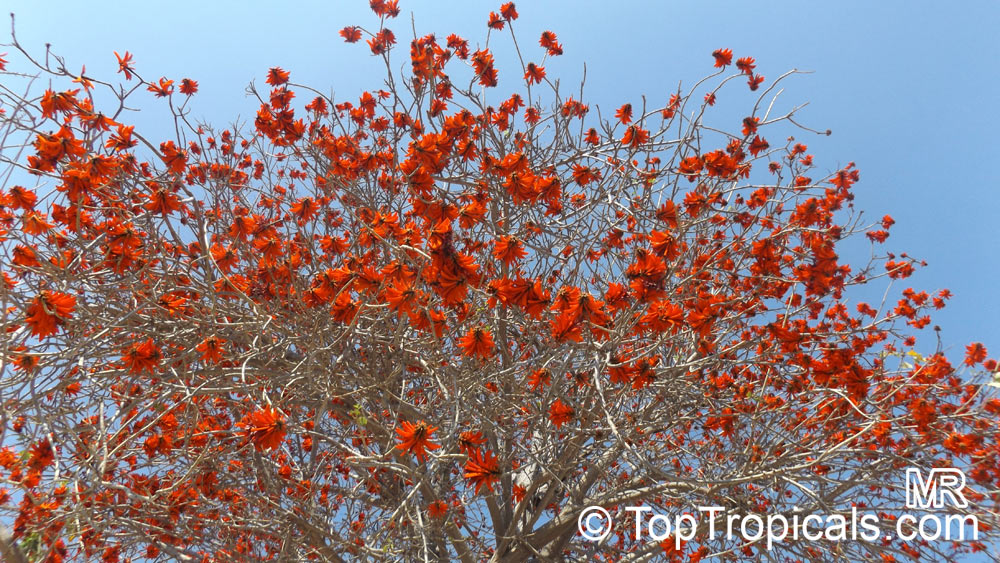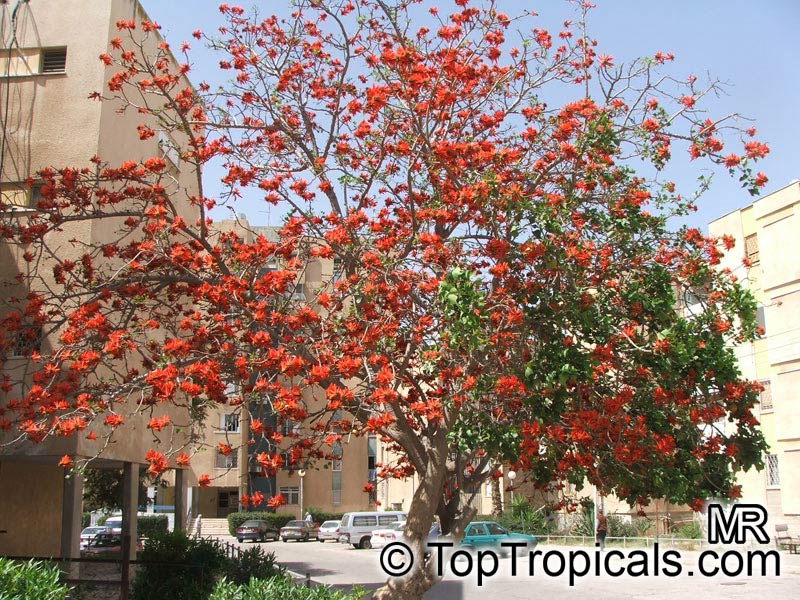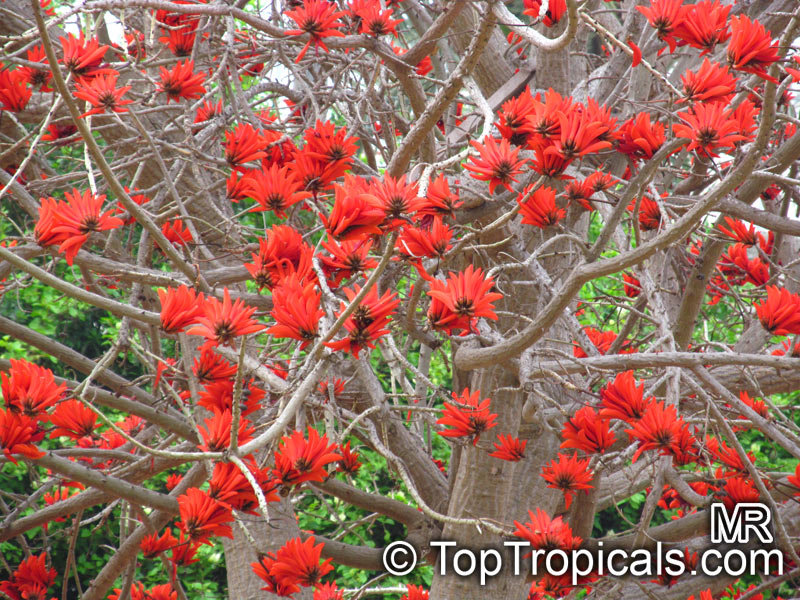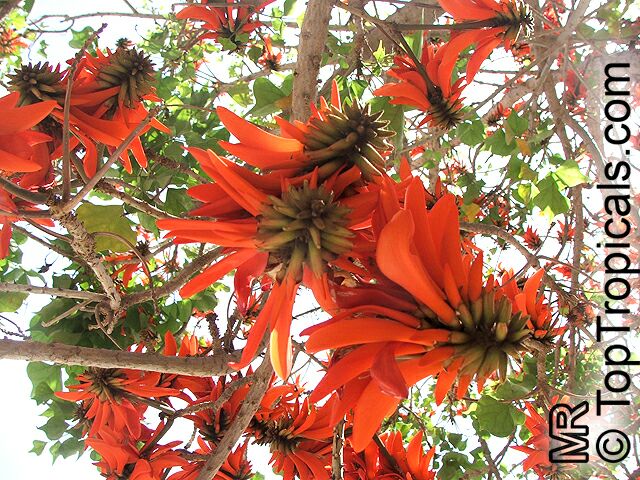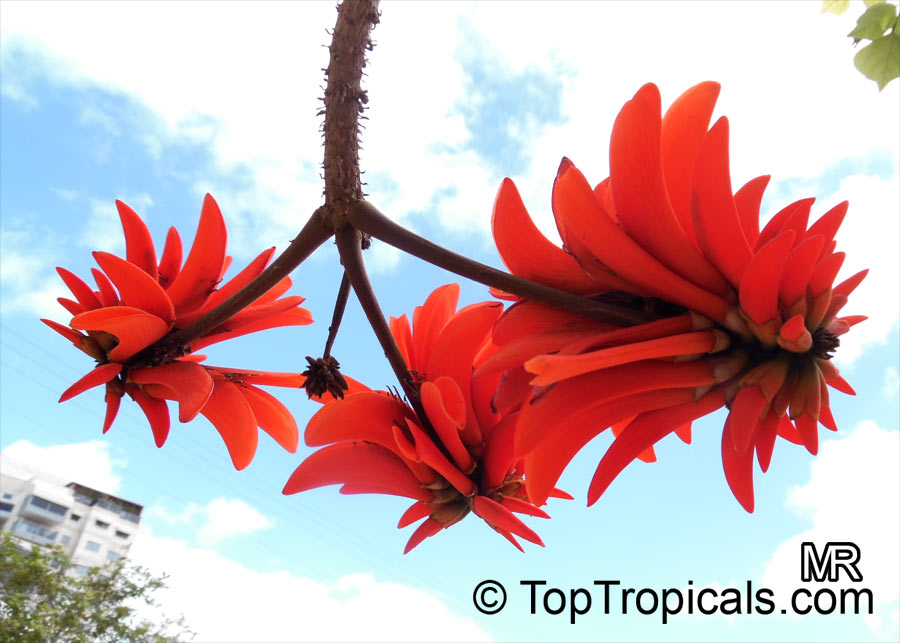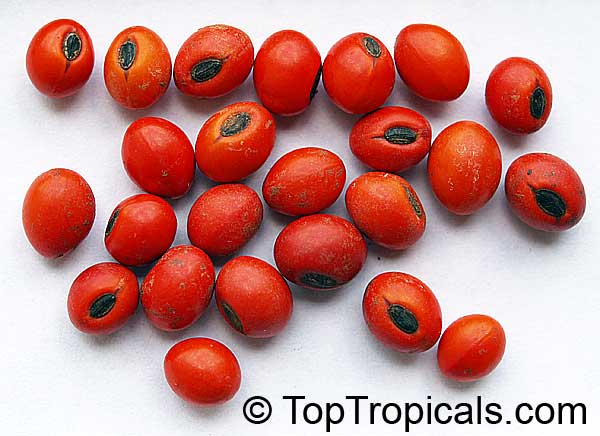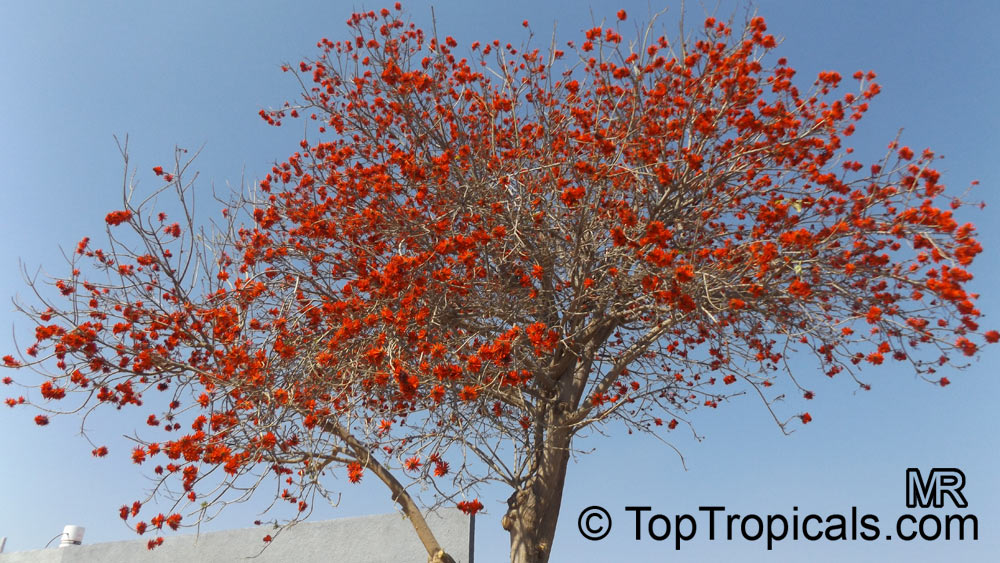Erythrina lysistemon (Scarlet Coral Tree)
Top Tropicals Plant Encyclopedia
Botanical name: Erythrina lysistemon
Common name: Scarlet Coral Tree
Family: Fabaceae
Subfamily: Faboideae
Origin: Africa





This is a stocky, thickset tree that often branches low down and usually grows up to 30ft in height, occasionally reaching 36ft. The bark is smooth and dark gray to gray-brown and is not thickly corky. Short, hooked prickles are sparsely and randomly scattered on the trunk and branches. The leaves are trifoliolate (compound leaves with 3 leaflets), and each leaflet is large, usually up to 17 x 7". The petiole, rachis and the midrib have hooked prickles on them. The common coral tree blooms in early spring and it produces flowers before new leaves or just as the leaves begin to show. The flowers are a beautiful clear scarlet and are carried in short, dense heads, about 9 cm long, on long, thick stalks. The standard petal (the large uppermost petal) is long and narrow and encloses the other petals and the stamens. The flowers produce abundant nectar that attracts many nectar-feeding birds and insects, which attract the insect-feeding birds as well. This tree prefers dry winters, but it will thrive in the wet winters of Western Cape as long as it is planted in well-drained soil and watered during the dry summers. Erythrina lysistemon is propagated from seed, cuttings and truncheons. Seed is sown in spring and summer, in a well-drained, general-purpose potting soil, placed in a warm but shaded spot and kept moist. Soaking the seed overnight in warm (not hot) water is not necessary for germination to occur, but should hurry things along. Dusting the seed prior to sowing, or drenching after sowing, with a fungicide that combats pre-emergence damping off, although not essential, will increase the percentage germination. Cuttings are best taken in spring to summer, and truncheons in late winter to spring. Truncheons are made from part of or even an entire branch which is left to dry and heal for a few days, then planted into a pot filled with sand or even directly into the soil where the plant is to be grown, and kept damp but not wet. If a plant has to be transplanted, this is best done whilst it is dormant, during winter.
Similar plants: Erythrina lysistemon (Scarlet Coral Tree)
- Butea monosperma (Flame of the Forest)
- Erythrina abyssinica (Coral Tree)
- Erythrina amazonica (Amazon Coral Tree)
- Erythrina bidwillii (Indian Coral Tree)
- Erythrina caffra (South African Coral tree)
- Erythrina coralloides (Naked Coral Tree)
- Erythrina crista-galli (Cry Baby Tree)
- Erythrina decora (Namib Coral Tree)
- Erythrina edulis (Chachafruto)
- Erythrina fusca (Cape Kaffirboom)
